The content of the article
One of the most common types of Lepidoptera is the butterfly of the marigold. They also have another name - satyrides. For a long time, according to many domestic entomologists, marigolds were defined as a subfamily of nymphalids. Foreign science supported this point of view. However, not so long ago, experts reviewed the position that has been established in classical science. Today, due to the presence of a large number of distinctive features, marigolds are considered a separate family.
Insect description
The size of representatives of this family of Lepidoptera is usually medium, sometimes small. A distinctive feature of insects is a short antennae with a slight thickening at the ends. This fact makes them similar to microscopic maces. The shape of the rather wide wings of the insect is rounded. Their color is ordinary and has no striking differences. This trend manifests itself even in color. So, the wing area is painted in different shades of brown and gray. Against such a neutral background, areas of black and white colors that make up the wing pattern characteristic of the family stand out and attract attention. They resemble the eyes of an animal.
This color plays the role of a camouflage robe. It does not allow insects to hide, but helps to divert the attention of a natural enemy from parts of the body that play an important role for life. So, at first the bird does not peck at the body of the insect, but at the white spot of the wing, deliberately attracting its attention. This allows the butterfly to remain, if not intact, but at least as unscathed as necessary for the continuation of life. However, among the majority of butterflies of marigolds, discreet in their appearance, there are species gifted with a rather bright color.
Interesting fact! In the territories of South America, there is a species of marigolds, whose wings are not scaly-cut, which makes them look completely transparent. Only the hind wings of individuals are decorated with a “visiting card” of satyrides - circles resembling the eyes of an animal.
The body of the butterfly is equipped with paws. Not all of them are developed and adapted for movement. So, when walking, only the rear and middle legs are used. In turn, the forelegs have abundant hair. He probably performs the function of a tactile organ.
Caterpillars hatched from eggs, preceding the appearance of a delicate butterfly, are painted green. For protection by masking the bodies of the larvae are also covered with stripes.
Insect Distribution Area
Marigold butterflies live in many corners of the planet, which allows us to talk about their wide distribution. In general, in the world community of living organisms there are about 2400 species of Lepidoptera of this family. On the territory of the former Soviet Union of the Socialist Republics there are more than 200 species. Marigold populations can be found in the Arctic, and in the highlands, and in the tundra, and in the steppe zone.
You can see the marigold on the road or forest glade, often butterflies are found near swamps. Favorable conditions for the life of insects have forests. There are populations living in the tropics.
Interesting fact! Marigold butterfly has unique abilities to maintain an uneven flight path. Its fluttering is so chaotic that it is difficult for birds to catch the insect they saw, so often the direction of movement changes.
Insect Transformation Stages
The larvae emerging from the eggs usually continue to develop in the places where cereals grow. Some caterpillars prefer to live on fescue and bluegrass. During the pupal stage, the cocoon hangs from bottom to top.
Wintering of most varieties of marigolds occurs at the caterpillar stage. Occasionally, in the cold season, eggs laid by females hibernate. Usually, within one year, only one clutch manages to develop to the last stage of the moth.
Satyrid family species
Let us turn to the most common types of butterflies on the territory of our country.
- In the forest-steppe zones, one can meet such a representative of this family of lepidopterans as a black butterfly. She is also called the coffee butterfly or Ligeya. A distinctive feature of the species is its color - the eyelet characteristic of the wing pattern has a dark brown color. The wingspan of this elegant and fragile creature is capable of reaching 26 millimeters. Large populations of nigella are found in ivan tea, in meadows sown with clover. At the caterpillar stage, coffee butterflies prefer to live in a fescue.
- Common in Russia is a butterfly called an ox's eye. On the warm days of warm summers, almost everyone who leaves the walls of the house meets her. The wings of individuals are painted in the color of ground coffee and are not without a distinctive pattern for many species of the family - a spot in the form of an eye. The wingspan of individuals is 5 centimeters. Males of the cow's eye differ from females in a slightly blurred reddish ring surrounding the main pattern of the “eye”. Larvae are painted in light shades of green.
- The Marigold dwelling in the Far East received the name Diana. The span of its wings varies from 45 millimeters to 55 millimeters. The "highlight" of the species is a patterned band of light color, as well as a bluish rim that borders the "eye".

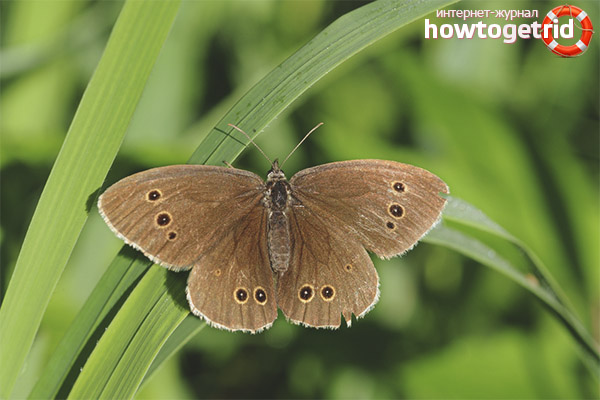
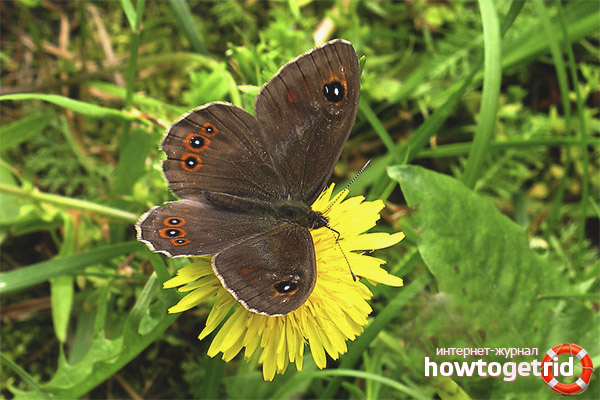
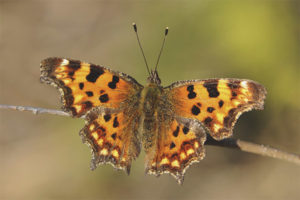

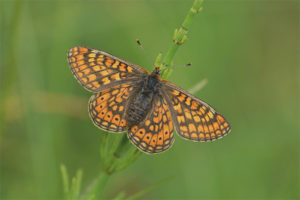



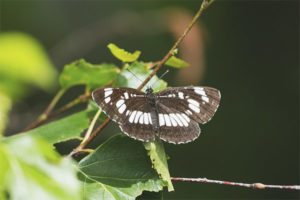
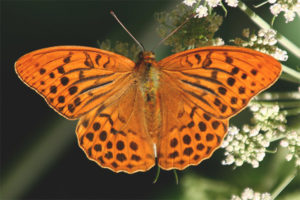
Submit